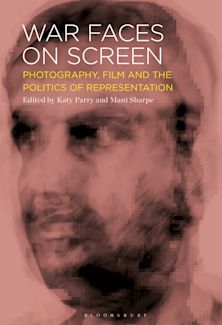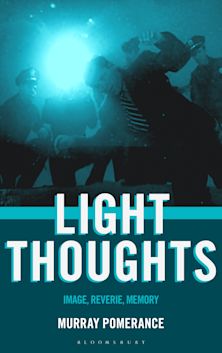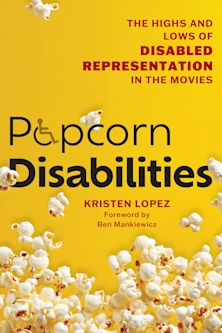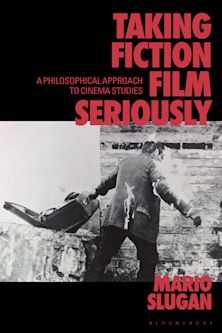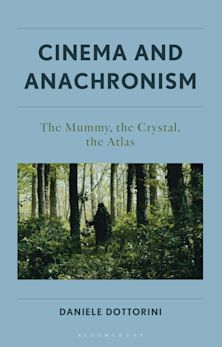- Home
- ACADEMIC
- Film & Media
- Film History
- The Korean Cinema Book
For information on how we process your data, read our Privacy Policy
Thank you. We will email you when this book is available to order
You must sign in to add this item to your wishlist. Please sign in or create an account
Description
The volume provides the first detailed and authoritative overview of Korean cinema history, and in so doing develops new historical and critical understandings of Korean cinema from the period of Japanese colonial rule to the present day, with two very different cinematic traditions in this divided peninsula.
The contributed chapters approach the subject from multiple and dynamic perspectives. The seven chapters in Part I, 'Historical Trajectories', provide diachronic coverage of several key areas of activity across the full breadth of Korean cinema history includinjg film policy, film style, and stars. Parts II-V provide synchronic coverage of a range of narrower topics, moving from the earliest extant silent film, Crossroads of Youth, (1934) to post-war genres such as melodrama and comedy, and from North Korean cinema to today's complex transnational movie environment. Each chapter develops its own distinctive argument while providing the reader with a detailed and accurate account of the particular period and topic under discussion. Many of these topics have never been discussed before in English-language scholarship, making this unique publication essential reading for anyone seeking to develop their understanding of cinema in the two Koreas.
Table of Contents
Notes on Contributors
Introduction
Nikki J. Y. Lee and Julian Stringer
PART I: HISTORICAL TRAJECTORIES
1. Film Policy and Censorship
Darcy Paquet
2. The History of Korean Film Technology: From Colonial Joseon Cinema to Banghwa of the 1980s
Chonghwa Chung
3. Mass Production System and Film Exhibition Sector: Power Dynamics Within the Korean Film Industry in the 1960s and 1970s
Junhyung Cho
4. Film Stars and Performance: Historicizing Cross-Cultural Engagement
Chung-kang Kim
5. Exploring Contemporary Korean Cinema Soundscapes
Julian Stringer
PART 2: COLONIAL CINEMA
6. Film Audiences without Movie Theaters: Early Korean Film Culture, 1897-1919
Dong Hoon Kim
7. Invaded Homeland: Colonialism, Early Cinema and Film Technology
Moonim Baek
8. Urban Life of Colonial Joseon and Turning Point of the Youngsters (1934)
Minah Jeong
PART 3: POST-WAR GENRES9. Bitter But Once Again: On Sinpa and Melodrama as Modern Korean Cinematic and Cultural Modes
Eunson Cho
10. State, Family and Laughter: Comedy Movies from the Late 1950s to the 1970s
Gwan-gyu Moon
11. A Mode of Articulation Between the Public and the Private Realms in Women's Movies of the 1970s
Hye-Jin Hwang
12. South Korean Political Documentaries
Eunkwang Huh
13. The Evolution of Korean Blockbusters
Nikki J.Y. Lee and Julian Stringer
PART 4: NORTH KOREAN CINEMA
14. Making of a Cinema State: A Study on Socialist Film Aesthetics with a Focus on 'On the Art of the Cinema'
Sunah Kim
15. A Study on Femininity in Juche Films
Myung Ja Lee
16. The Other Side of the Same Coin: The Pyongyang International Film Festival
Derek Elley
PART 5: CONTEMPORARY TRANSNATIONAL FILM CULTURES
17. You Mean CJ Doesn't Stand for Cinema Justice?
Kyung Hyun Kim
18. What Price Glory?: Transnational Cannon Formations and the Double Encoding of Korean Art Cinema
Hye Seung Chung
19. Branding Korean Cinema: Orientalism, Asia Extreme, and the Circulation of South Korean Films in the UK
Daniel Martin
20. 'At Stake Is Nothing Less Than My Body!': The Border-Crossing Body in Traffickers and Stateless Things
Juyeon Bae
21. Mapping Sinicization and Corporatization in Sino-Korean Screen Collaborations: Mr. Go (2013), Dexter Studios, and the Power of Leverage
Nikki J.Y. Lee and Julian Stringer
Select Bibliography
Index
Product details
| Published | 21 Aug 2025 |
|---|---|
| Format | Paperback |
| Edition | 1st |
| Extent | 352 |
| ISBN | 9781844574254 |
| Imprint | British Film Institute |
| Illustrations | 90 b/w |
| Dimensions | 246 x 189 mm |
| Publisher | Bloomsbury Publishing |













